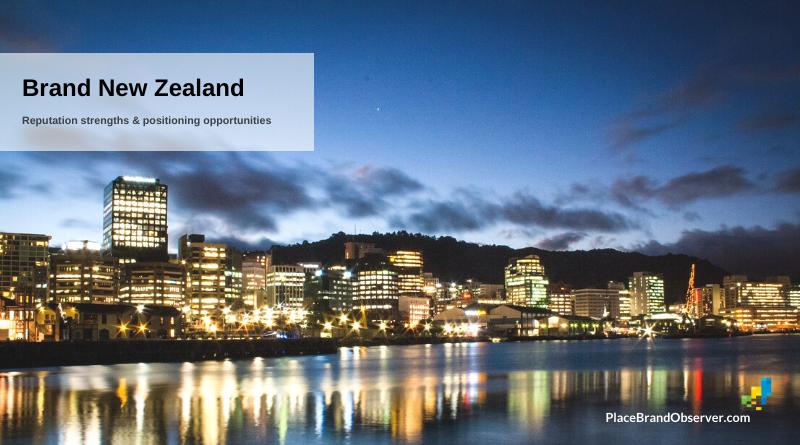To your mind, what does Brand New Zealand stand for today? Which associations come to your mind linked to New Zealand’s country brand positioning – and if you were in charge of Brand(ing) NZ, what would you do differently?
That’s what we wanted to know from our panel of place brand experts. Here a snapshot of the panel’s responses.
Curious about what world’s leading place brand specialists think about your country, region or city? We might be able to help you find out. Contact us here.
What does Brand New Zealand stand for today?
Hardly a surprise, a majority of the panel respondents pointed out obvious assets, especially the country’s greenery, cleanliness, high standard of living, respect for nature, coastline, volcanoes – and not to forget its woolly Merino sheep.
Apart from geographical characteristics, other aspects that the panel associates New Zealand with are the famous 100% Pure New Zealand campaign (more about it here), the All Blacks rugby team, the Lord of the Rings feature film trilogy, its multicultural society, and the proud association with Maori culture.
But what made New Zealand a major talking point more recently is its deft handling of crisis situations and Prime Minister Jacinda Ardern. Her leadership skills have been globally recognised for skillfully handling the Christchurch mosque shooting, call for unity with the minority Muslim population in the aftermath of the attack, and handling the COVID-19 crisis.
While a majority of the panelists feel that Brand New Zealand has a very strong focus on its unspoiled nature and greenery, the combined positive depictions of New Zealand owing to strong leadership reinforce the brand image of the country, linked to pre-existing brand values like reliability, and trustworthiness.
The soaring popularity of Jacinda Ardern has catapulted the image of New Zealand to a country synonymous with security and political stability, while harbouring a peaceful society with an inclusive population.
Which associations come to mind linked to New Zealand’s country brand positioning?
One of the most noteworthy observations made by the panel was that Brand NZ seems to be strongly inclined towards attracting tourism and to have been built to boost tourism and attract visitors. While this has reaped its benefits in boosting tourism to the country, there is a feeling that Brand NZ could diversify its brand messaging further, to attract skilled labour, investments, and businesses. As one panel member put it, although tourists probably love the clean and green brand, it does not communicate the country’s diversity and attractiveness as a hotspot for new, emerging technologies too well.
The panel’s feeling is that Brand New Zealand has the perfect opportunity right now to change these prevalent perceptions, given the brilliant media coverage the country has received lately, which can work to its advantage.
If in charge of Brand(ing) New Zealand, what would you do differently?
A few of the panelists find the image built by Brand New Zealand to be good as is, with nothing much in need of change. In this regard, New Zealand delivers exactly what the brand promises and continues to symbolise and inspire the same confidence and the same brand values, namely, quality.
Other panel members feel that the brand has the scope to implement certain ideas to complement NZ’s current image of 100% Pure and the natural environment, pointing out that its identity may be overly reliant on Nature, when the country has so much potential to address other demographics and audiences as well [at TPBO we know that this has already been accounted for in recent updates of the destination brand positioning, with a turn in storytelling towards a “100% Pure New Zealand” experience].
That said, moving away entirely from the green and clean image might not be the best idea either, since the brand equity associated with this image is high and the ROI from such a brand positioning has reaped its benefits time and again.
Rather, what Brand New Zealand could do is to differentiate itself with various offerings to attract talent, investment, and visitors. One such differentiating factor would be to attract the creative class by showcasing Auckland’s vibrant ethnic diversity and street culture.
Since New Zealand is famous for its multicultural society, there could be a stronger focus on communicating this image of a country that welcomes potential skilled workers and showing how they can integrate themselves easily, according to the panel.
Moreover, Brand New Zealand could capitalise on the current image of the country as safe and secure, banking on the outstanding performance of the government and healthcare sector during the pandemic and subtly infusing this into its brand communications. This could work wonders in attracting a talented workforce, especially families looking for a great lifestyle that still delivers sought-after work opportunities.
Apart from riding the wave of positive opinion about New Zealand, the country could highlight Auckland, Wellington, and Christchurch by connecting the urban brands to the New Zealand brand. Balancing images of vast wilderness with cosmopolitan urbanity can work in its favour.
In short, New Zealand could merge the cultural, crafty and urban dimensions of the country to broaden its brand proposition. This also as a way to support indigenous cultures and economies, which should be front and center in NZ place brand strategies.
What do you think of Brand New Zealand? What do you like most about the country? And what changes or improvements to the country’s branding strategy would you make, to give New Zealand a fresh appeal and make it attractive for investors, talent and visitors? We’d love to hear from you.
Back to our New Zealand country report.
More about New Zealand’s country performance, its brand image and reputation HERE.


